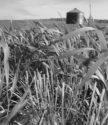Advertise Follow Us
Articles Tagged with ''barley''
Multifaceted Cover Crops Reward No-Tiller
Virginia “never-tiller” Paul Davis sees a faster increase in soil organic matter, a reduction in applied nitrogen and improved yields from cover crops.
Read More
Hoping For Rain, Counting On No-Till
No-till has not only been better economically for Angela, Mont., farmer Alan Ballensky, the moisture protected by no-till has helped him raise yields that many would not deem possible in such a dry climate.
Read More
Montana No-Tiller Found Getting ‘Lazy’ Worked
Arnold Gettel first tried no-till in 1969 and has seen soil structure and dryland yields improve as a result.
Read More
Failing A Requirement For North Dakota No-Tiller
Constant change, integration and diversification not only saved Gabe Brown’s farm, but also helped it thrive in tough conditions.
Read More
More Moisture, More Cropping Acres In Drylands
No-till allowed Montana dryland producer Ben Minow to reduce overhead and increase cropping acres by eliminating summer fallow.
Read More
What I've Learned from No-Tilling
Preserving The Fertile Soils Of The Palouse
Going 100% no-till in 1997 has placed Read Smith in position to help lead the effort to protect the fragile farmland of eastern Washington.
Read More
Do More With Direct-Seeding And Limited Moisture
Thanks to direct seeding, Washington landowners spend more dollars, but end up with higher returns.
Read More
Tackle No-Till Small Grain Pest Concerns
Try these profit-building ideas for controlling weeds, diseases and insects in no-tilled wheat and barley.
Read More












